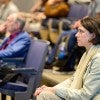
Plasmonics conference showcases Rice for international audience
Some 250 researchers attended the 10th International Conference on Surface Plasmon Photonics (SPP10) at Rice May 21-26.

Plasmonics conference showcases Rice for international audience
Some 250 researchers attended the 10th International Conference on Surface Plasmon Photonics (SPP10) at Rice May 21-26.

Naomi Halas named University Professor
Rice University has promoted nanotechnology pioneer Naomi Halas to its highest academic rank, University Professor. Halas, a 33-year member of Rice’s faculty, becomes only the 10th person and second woman to earn the title in Rice’s 111-year history.
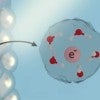
Nanoparticles make it easier to turn light into solvated electrons
Chemists from Rice, UT Austin and Stanford have uncovered the long-sought mechanism of a light-driven process that creates solvated electrons, inherently clean chemical reactants that are attractive for green chemistry.
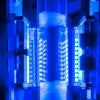
Rice lab’s catalyst could be key for hydrogen economy
A light-activated catalyst efficiently converts ammonia into clean-burning hydrogen using only inexpensive raw materials.
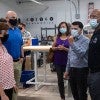
Rice U. technology startup Syzygy Plasmonics raises $76 million in latest funding round
Syzygy Plasmonics, a Houston-based startup fueled by technology developed at Rice University, has announced $76 million in Series C financing led by Carbon Direct Capital — one of the largest rounds of funding for a venture spun out of a Rice lab.
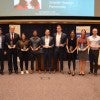
Investors, leaders recognize 11 companies at annual Texas Life Science Forum
Life science innovators, academics and investors – including those specializing in health tech, medical devices and therapeutics – convened at Rice University this week to discuss Houston’s role in the future of health care and give awards to top early-stage life science companies.
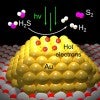
New catalyst can turn smelly hydrogen sulfide into a cash cow
Rice engineers and scientists and collaborators have discovered an efficient, one-step process for converting hydrogen sulfide gas into clean-burning hydrogen fuel.

Halas, Nordlander honored in Rome
Italian President Sergio Mattarella presented Rice’s Naomi Halas and Peter Nordlander the 2022 Eni Energy Transition Award in an Oct. 3 ceremony in Rome's Quirinal Palace.

Halas, Nordlander win prestigious Eni Energy Transition Award
Rice’s Naomi Halas and Peter Nordlander have won the prestigious 2022 Eni Energy Transition Award.
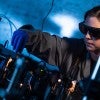
Rice ‘metalens’ could disrupt vacuum UV market
Rice photonics researchers have created a potentially disruptive technology for the ultraviolet optics market.
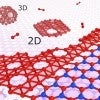
Weak bonds a strength in making borophene
Rice University researchers show how borophene, the 2D form of boron, can be grown to simplify its use for applications.

NSF grant kicks off Center for Adapting Flaws into Features
Rice University has won a Phase I National Science Foundation grant to establish the NSF Center for Adapting Flaws into Features to investigate nanoscale chemical phenomena and optimize the structures and electronic properties of materials.
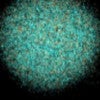
Silver ions hurry up, then wait as they disperse
There’s gold in them thar nanoparticles, and there used to be a lot of silver, too. But much of the silver has leached away, and researchers want to know how.
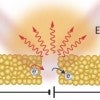
Teamwork makes light shine ever brighter
If you’re looking for one technique to maximize photon output from plasmons, stop. It takes two to wrangle.
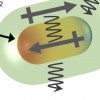
‘Soft’ nanoparticles give plasmons new potential
Bigger is not always better, but here’s something that starts small and gets better as it gets bigger.